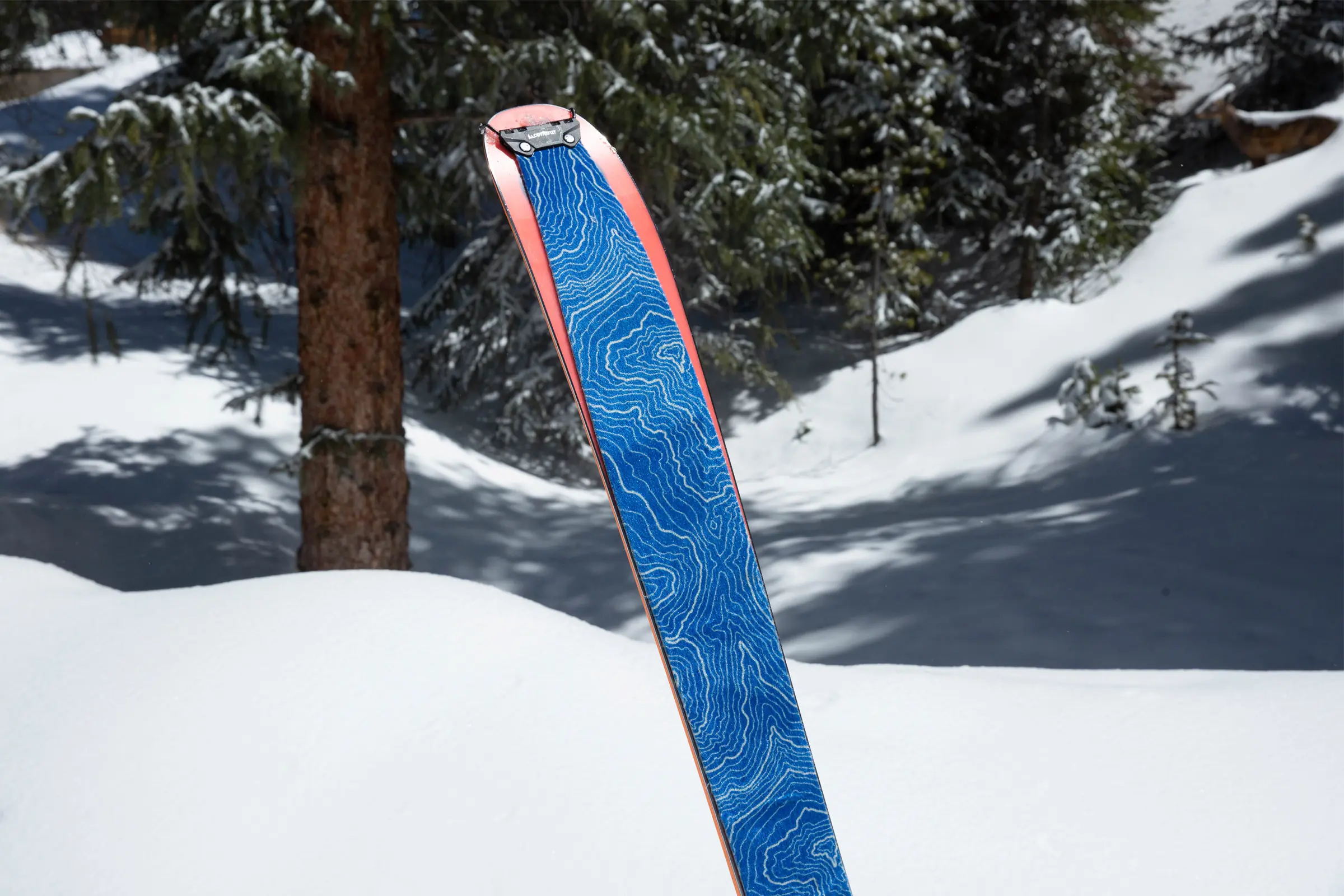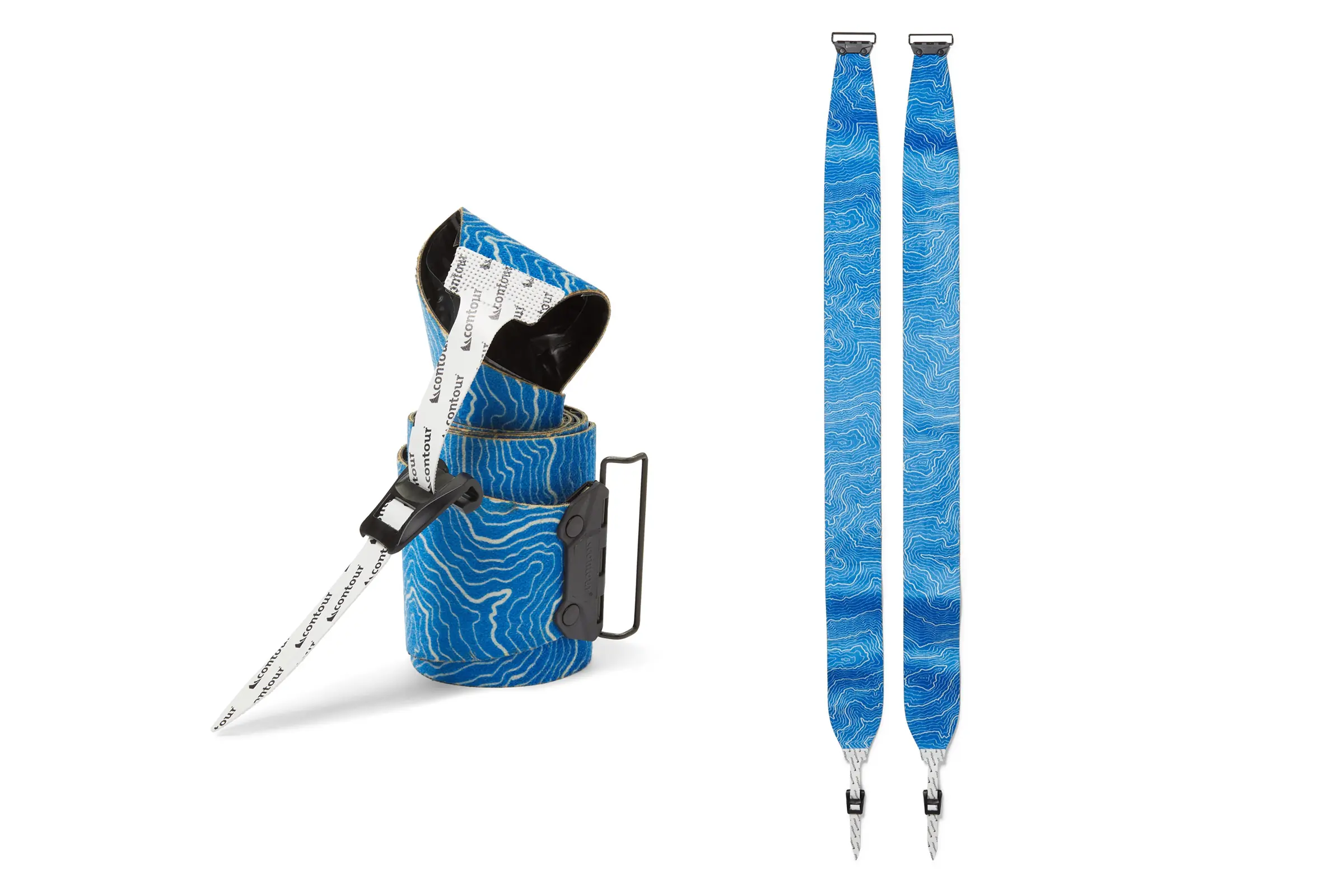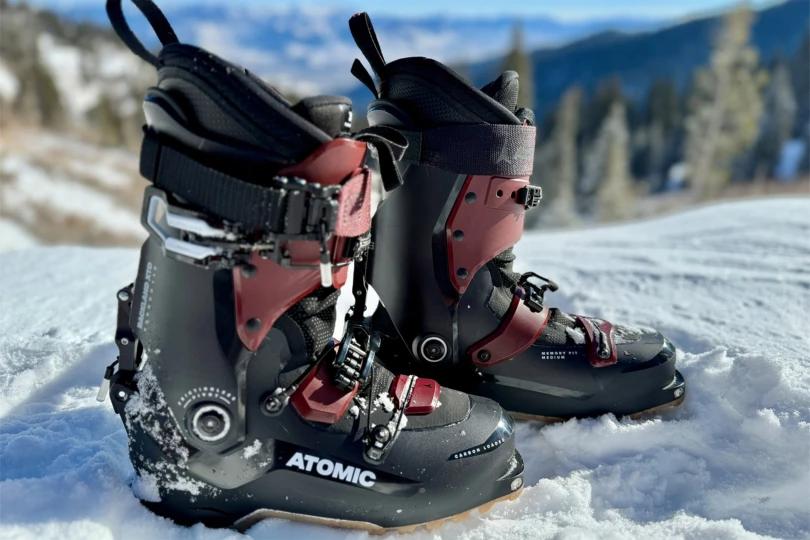Every time I struggle with my climbing skins at the top of a mountain, I think, “There has to be a better way.” After discovering Contour’s Hybrid Mix skins, I think there is.
There’s been an explosion of innovation in backcountry skiing and splitboarding gear innovation thanks to the booming interest in the sport over the past decade. Touring gear seems to be rapidly getting lighter and performing better every year.
But climbing skins mark one place where time has stood still. Most of the skins I’ve tested in the past few years aren’t much different than the Black Diamond skins I used when I went on my first tour 15 years ago. At trailheads and mountaintops around the Mountain West, I still see both beginners and experts alike cursing out their climbing skins.
So, I was confused and skeptical when I bought a pair of Contour Hybrid Mix skins on a whim from my local ski mountaineering shop last season. The skins seemed to barely have glue on them, and didn’t cement to themselves on everything in their orbit. Yet they seemed to work every bit as well as any of the other skins I’d tested over the years. They also packed down small — they fit in a normal jacket pocket.
I’ve since met ski guides, athletes, and other recreational backcountry skiers and splitboarders who had the same initial reaction and who have gone from skeptics to converts. I’ve also gleaned some best practices, plus a few downsides and caveats to my enthusiasm for these easy-to-use skins.
In short: After testing the skins for several months and talking with hardcore backcountry skiers and guides, I’m convinced that the Contour Hybrid Mix skins are (finally) a legitimate leap forward in climbing skin design. They are worthy of your consideration.
Compare the Contour Hybrid Mix Skins to the rest of our picks in our guide to best climbing skins.
- Cost: $190-210
- Available lengths: 153-160 cm, 161-168 cm, 169-176 cm, 184 cm, 185-195 cm
- Available widths: 115 cm, 135 cm
- Weight: 312 g (115mm x 169-176)
Pros
- Easy to work with
- Light and compact
- Stable performance across different temperatures
- Won’t ever require regluing
Cons
- Diminished adhesion in extreme cold
- Requires special attention in application to skis and storage
Contour Hybrid Mix Skins Review

Contour makes 10 different models of skins. It’s important to note that only five of them use the newer hybrid adhesive. The other five fall under the Guide line and use traditional “hot melt” adhesive, which makes them similar to most other skins on the market.
Here, I focus on the Hybrid Mix Skins. These use the hybrid adhesive and a 65% mohair and 35% nylon blend on the other side for a good all-around skin.
However, it’s worth noting that Contour also uses the hybrid glue on splitboard skins, a “Speed” skin, and a “Pure” skin that’s 100% mohair if you need something outside of the mohair/synthetic blend.
The Innovation
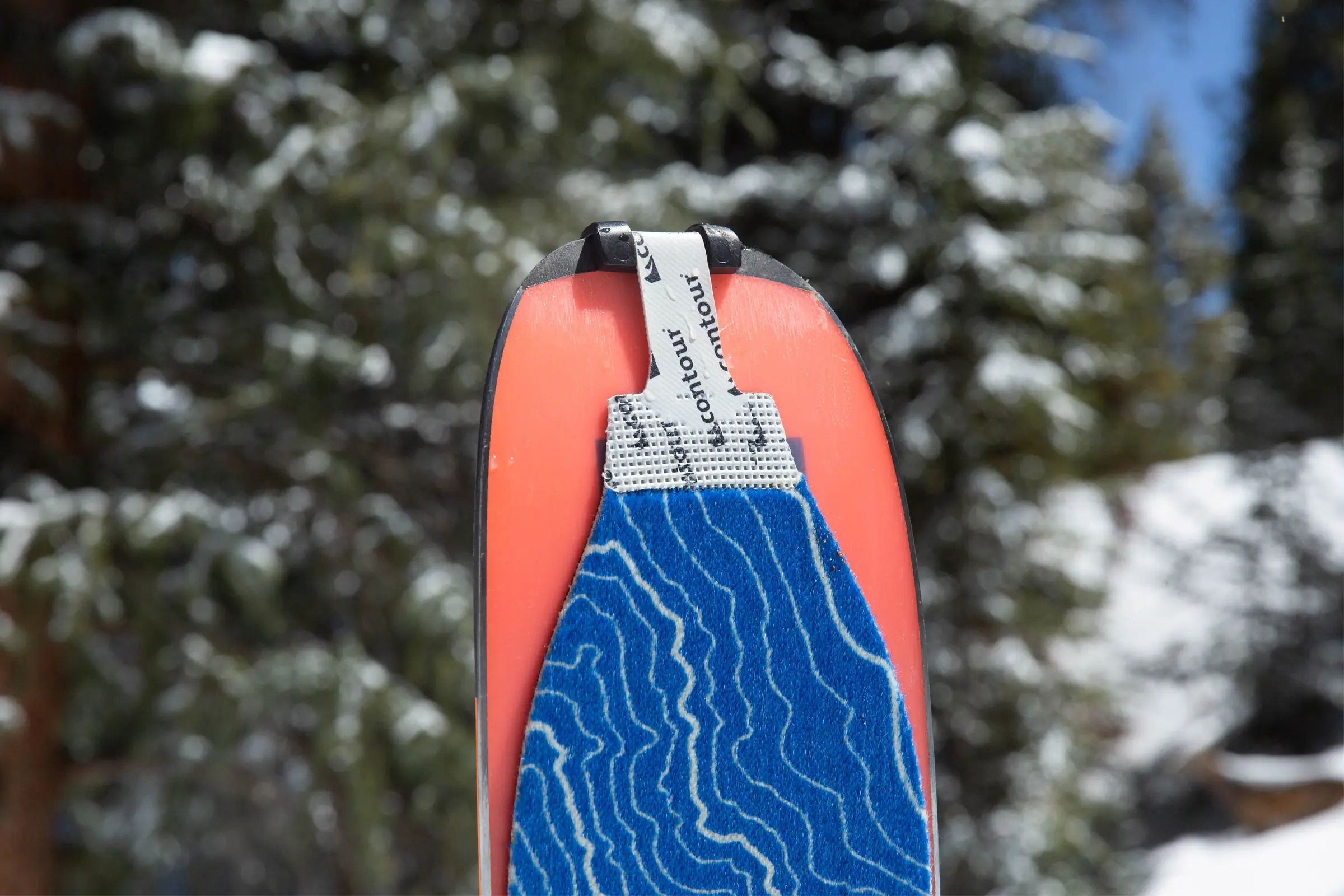



I wouldn’t have bothered writing about skins if it weren’t for Contour’s proprietary hybrid adhesive. It’s responsible for its easy-to-work-with light tack that somehow holds well, endures multiple transitions easily, and doesn’t require regluing.
The rest of the skin isn’t markedly different from competitors. I’ll highlight some smaller touches below that add to its allure.
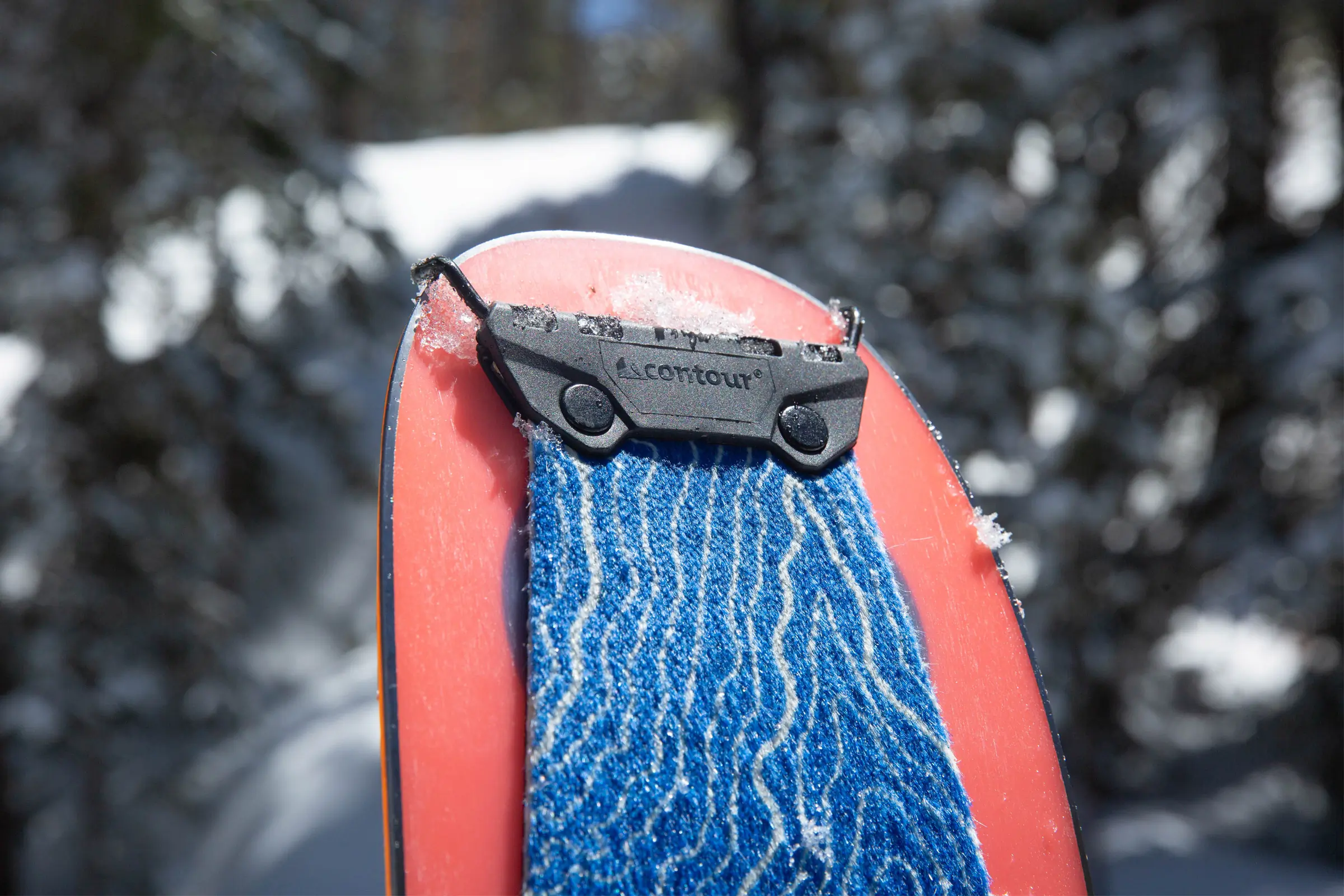



To try and solve the frustrations with traditional “hot melt” skins, Contour developed a process that combines two types of adhesives: one on the outside that sticks the skin to the ski and another behind it that adheres that outward-facing glue layer to the skin itself.
Contour’s owner, Werner Koch, told me the company landed on the process after deciding that a single glue couldn’t meet the requirements of both adhering to the skin during production and satisfactorily performing in the field.
To avoid overhyping it, it’s worth noting that Contour has been in business since 1978. It first released skins with the hybrid adhesive in 2012. This isn’t a brand-new entrant into the climbing skins market. That said, I had not seen Contour skins on the skin track or in stores in the U.S. until 2022. And I write about ski gear for a living.
Easy to Handle
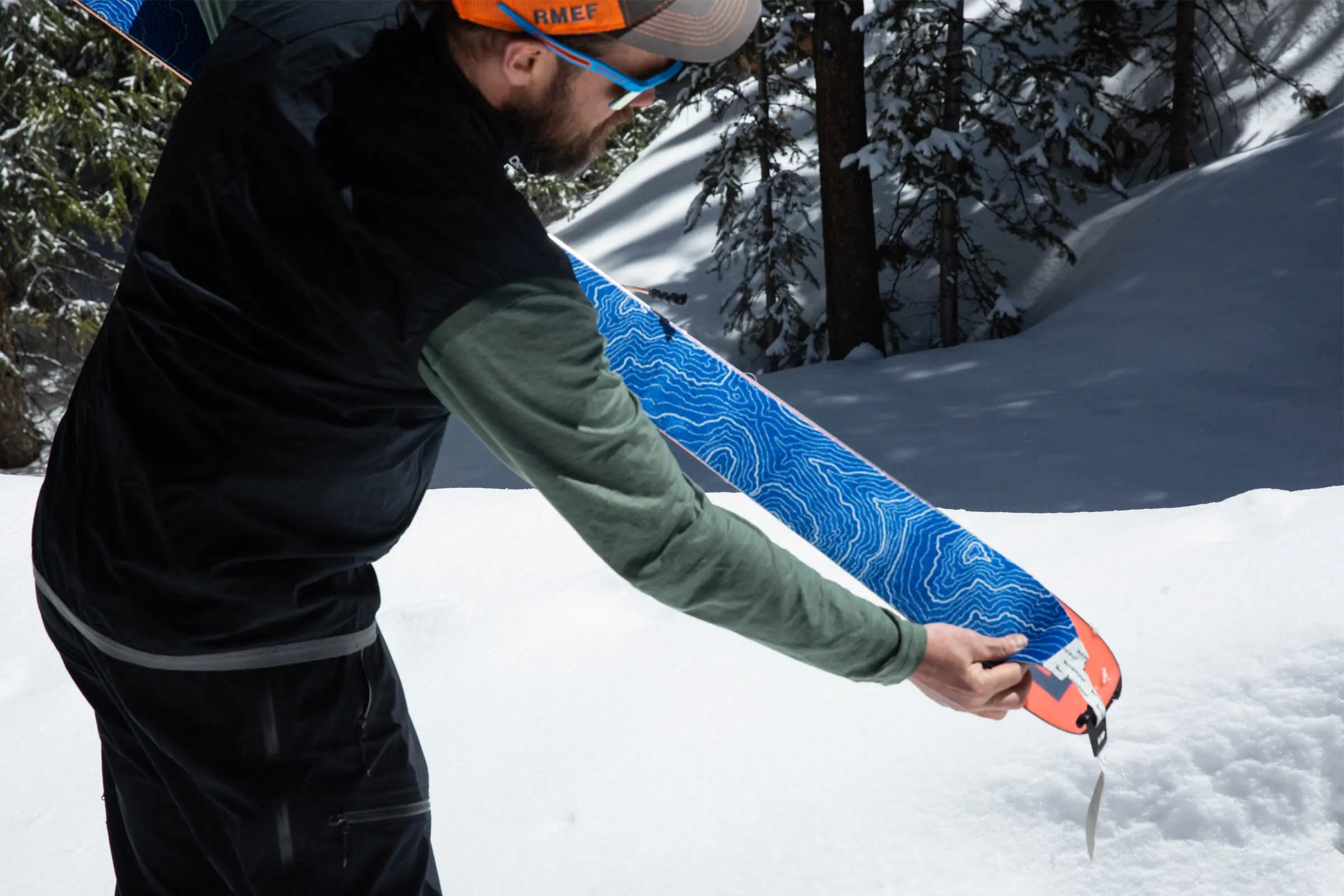



There are several purported benefits to this twin-layer glue method that seem to be borne out in the field.
The most obvious one when handling the skins for the first time is the mellow tack that makes them easier to work with than traditional skins. They stick to themselves, but you don’t need to be a powerlifter to get them back apart. Likewise, they stick to your skis well but won’t pull P-Tex out when you take them off. They rip off with a flick of your wrist.
Jordan Berde, a ski buyer at evo, has been on Contour skins for three seasons. She said she’s in the process of converting all her ski setups to Contour.
“Nothing beats getting to the top of the run and transitioning in a flash. Seriously, I’m in it for the look of amazement and jawdrops from my friends when we’re ripping skins. I almost always get a ‘whoa’ out of someone,” she said.




I’ve gloated in similar moments at transition points when I rip my Contour skins with one easy pull like a grizzled backcountry veteran, but I also really appreciate how easy they are to separate for applying them to your skis as well as folding to themselves to put in your pack, even in high winds.
Now, when I use traditional glue skins, I’m always annoyed at the number of tries it takes me to get them folded symmetrically. And let’s not forget the physical strength required to pull them apart for another lap.
Temperature Sensitivity
Because it’s chemically stable, the glue isn’t as temperature-sensitive as traditional glues. With hot-melt adhesive skins, this variability can make it frustrating to separate warm skins or to retain the skins to your skis when touring in extreme cold. I’ve personally tested the Hybrid Mix Skins around Colorado this season in cold January snow through gloppy May slush and had no issues.




Amos Whitling, owner and head guide at Aspen Expeditions, is a Contour Hybrid convert and has used the skins around the world without issues.
“I’ve used them now in Iceland, Antarctica, Hokkaido, the Tetons, and Colorado. Pretty much all the major snowpack types,” he said, adding, “I’ve been skiing backcountry since ‘93 and had lots of different skins and these are the best. They don’t ever fail. Period. And it’s easy to fix if they slightly do.”
Whiting also noted that while his guides have the option to get ski skins for free from several companies, most of his veteran guides have switched to Contour’s Hybrid Mix skins and are equally enthusiastic about them.
Berde from evo said she’s had some issues with adhesion in extreme, sub-zero cold, but that making extra passes on the skinned ski with a gloved hand usually prevents any issues in the field. Contour’s bag for the skins also comes with a chamois patch for wiping skis, as moisture can also hamper adhesion.
Easy Refreshes
The glue’s stability also means they are easy to clean with Contour’s cleaning solution for a like-new refresh if they get soiled with ski wax or other debris. If you’ve ever scraped pine needles off traditional glue or, even worse, reglued skins at home, you understand the allure. The stability of the adhesive also means it won’t leave glue residue on your skis. That stuff can very literally stop you in your tracks on the downhill.
Koch said the hybrid glue isn’t affected by UV rays or heat, but admitted that the skins need some special attention to maintain their carefree performance.
“The glue does attract dust, dirt, and excess wax more than hotmelt and loses tack whenever the surface gets contaminated. So keeping them clean using the wipes included is key to success,” he said. He also recommends being extra fastidious about clearing excess wax from your skis after a tuning.
Anecdotally, after one season on the Contours, I have yet to need to clean them, though I only use the Contour skins on one of my backcountry ski setups. They haven’t had daily abuse.
Aspen Expeditions’ Whiting is on his first season on Contour hybrid skins and likewise hasn’t had to clean yet. He said, “I’m admittedly not a good gear caretaker. Father of three, busy, and my stuff gets slammed on the shelves. Sometimes they get dried. Sometimes they don’t. I still haven’t had any issues.”
Setup and Install




In most respects, the cut-to-fit process for the Contour skins is the same as most other skins. Contour sizes the Hybrid Mix skins so you won’t need to cut them to length and install hardware. Nose and tail clips come pre-installed. Evo’s Berde is bullish on the tail clips
“The positive feedback you get when you clasp it into place is unlike any other tail clip on the market,” she said. “It’s easy to clasp onto the tail and I notice far less movement than other tail clips.”
The only cutting required is to trim to match the shape and width of your skis. Contour includes an offset cutting tool that was easy to use and, anecdotally, resulted in my cleanest skin trimming of the year. I recommend stabilizing the ski and skin in a vice if you have the option.
Where to Buy
Italian mountaineering brand Camp has a U.S. headquarters in Boulder, Colo. It handles the distribution of Contour products, and you can purchase Contour skins on its website. I first found Contour skins at my local ski mountaineering shop. If you don’t have one of those, they are usually available at outdoor-oriented online retailers such as REI, Backcountry, evo, and Skimo.com. At the time of this writing, Amazon also has the Hybrid Mix skins available for less.
Alternatives
Several other companies including Montana, Kohla, and Colltex make similar skins. They’re often referred to as “glueless” skins because, like Contour Hybrid skins, the adhesives don’t have the nasty habit of forcefully sticking to anything in their path.
Of these, I have only tested Montana’s glueless skins. While the adhesive was a joy compared to traditional skins, I had fairly frequent issues with adhesion to the ski. Snow frequently snuck under the skins and required me to scrape the skins on the skintrack. This only got worse with use and eventually required a regluing and I ultimately moved on to different skins.
That said, I expect that skin manufacturers will continue to plug away with improvements to both traditional hot-melt skins and newer glueless models. If you’ve used any other skins that you think are worth considering, please let us know!
Contour Hybrid Mix Skins: Conclusion
All the Contour Hybrid users I’ve talked to were just as skeptical as I was when first seeing or hearing about the skins.
“How is that going to work?”
“I bet they won’t perform in the cold/wet/warm/whatever.”
Other than reduced sub-zero performance (an issue most skins have), I’ve yet to find the downside to Contour’s hybrid glue skins. Longevity is an open question as I’ve only used them for one season.
My first skins were thick and heavy hot-melt Black Diamonds that lasted me seven modest seasons (with regluing). Will the comparatively light, thin, and flexible Contours make it that far? Time will tell, but I’m happy to be using them as long as they do.
You might just have to witness someone else’s effortless transition with the Contours in the field to be convinced. If you haven’t personally seen them yet, I predict you will soon.
